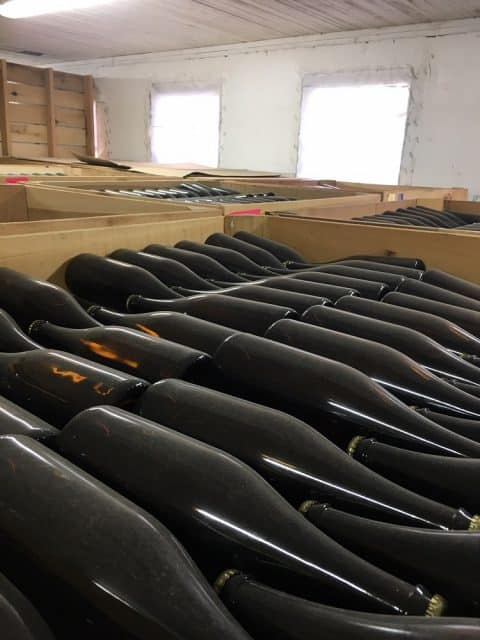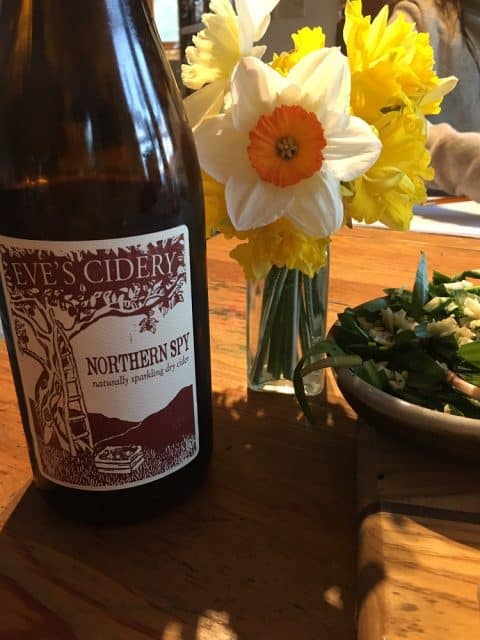New York state is home to several distinctive apple-growing regions with distinct challenges, pressures and rewards, all of which have a profound impact on cider. Various environmental, geographical, geological and cultural and historical factors define the fruit and its products.
Still in the infancy of the cider industry, these regions are being defined and negotiated as their true potential becomes more understood. Examining these regions in their youth can lead to a better understanding of New York’s effect on apple culture in the Americas.
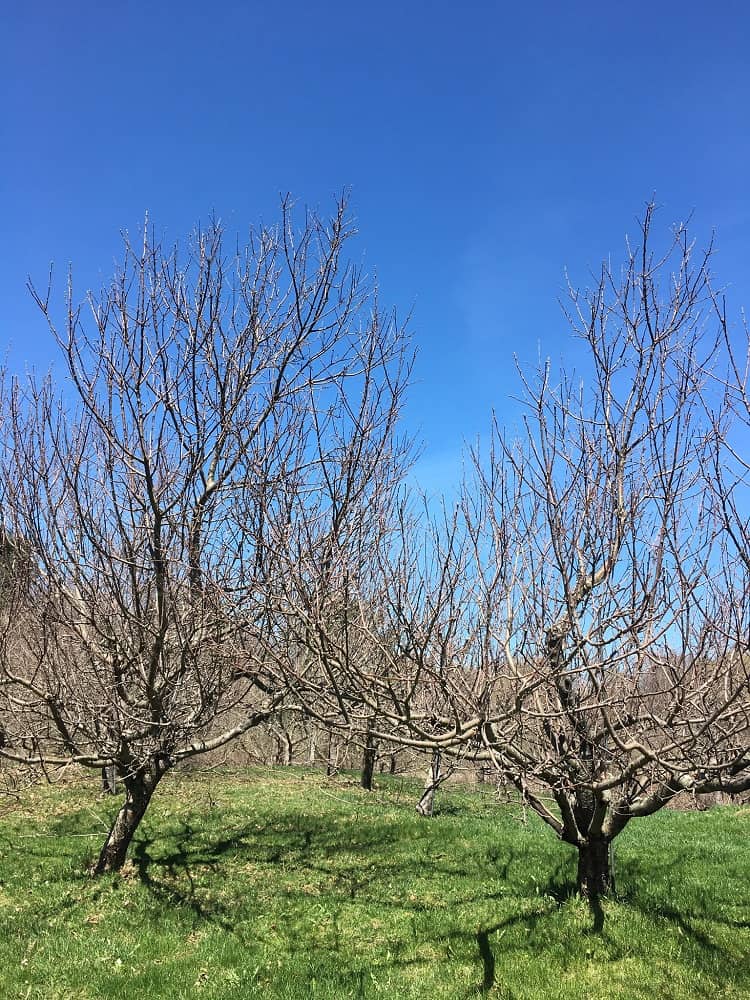
History
New York’s potential has been recognized since our country’s founding. George Washington is often cited as the source of the term, “the Empire state,” when he remarked on the naturally advantageous terrain.
The Prince Nursery, located beneath modern Flushing and according to the Smithsonian it was founded in 1737 was America’s first tree nursery. It became an epicenter for American apple research and propagation. Many of the country’s greatest trees, like Esopus Spitzenburg, and NYC’s own Newtown Pippen, spread across the country thanks to the work at Prince. Later, in the 1830s, Robert Livingston Pell created one of the first modern commercial premium orchards in Esopus, NY, where his apples received previously unheard of prices and were so lauded that they were exported to Europe.
The inherent quality of the fruit, because of the practices in its development, is paramount for making excellent cider. This is alien to the modern super market mentality, where gloss, crunch and shape are valued over character. Not every variety is suited for every orchard. Many orchardists are following the work of Steve Wood at Poverty Lane Orchards, but his choice varieties came after decades of research and trials. Qualitative assessment of fruit for cider making has only just begun in the modern context, but its importance was noted in earlier work like Andrew Jackson Downing’s 1846 Fruits and Fruit Trees of America, where he mentioned importance of terroir when trying to grow high-quality fruit.
“We may here remark that almost every district of the country has one or more varieties which, having had its origin there, seems also peculiarly adapted to the soil and climate of that locality. Thus the Newtown pippin, and the Spitzenburg are the great apples of New-York; the Baldwin, and the Roxbury Russett of Massachusetts; the Bellflower and the Rambo of Pennsylvania and New-Jersey; and the Peck’s Pleasant and the Seek-no-further of Connecticut; and though these apples are cultivated with greater or less success in other parts of the country, yet nowhere is their flavour and productiveness so perfect as in the best soils of their native districts — excepting in such other districts where a soil containing ihe same elements and a corresponding climate are also to be found.”
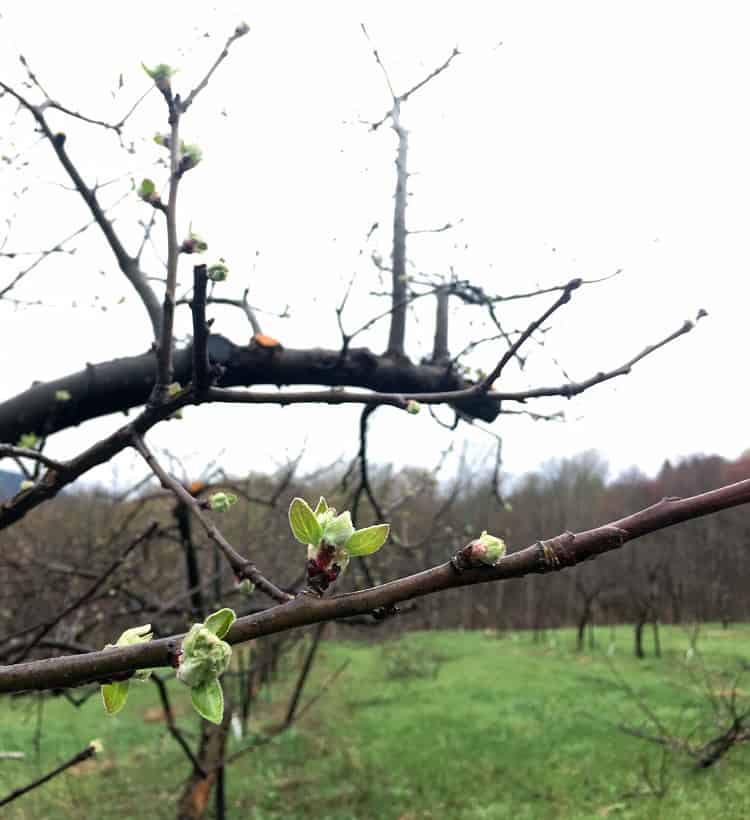
The apple industry of today often ignores these warnings from the past, and instead plants trendy apples like Honeycrisp in orchards that are unsuitable. Much of the cider made today is from apples that were planted with non-cider intentions. These intentions vary across regions. Linked to history, tradition and location, these often have a larger impact on the cider decisions than the soil, climate or other traditional terroir expectations. The Finger Lakes, Lake Ontario and the Hudson Valley are the largest, most-developed regions within New York. They each bring their own unique set of qualities and traditions to the bottle.
The Hudson Valley
The Hudson Valley is home to New York’s oldest and warmest orchards. The region was the original bread basket for the growing metropolis at its mouth and loamy rocky soils proved excellent for apple cultivation. The Hudson River is an amazing body of water. Called Muhheakantuck in Mohican, meaning the river the flows two ways, ice floats can be noted as flowing in both directions.
The river is tidal and originally founded by Nantucket whalers who pursued their prey up and down the river. The river helps extend the growing season late into the fall by moderating the climate. The river encompasses several different climate zones and geology as it runs its course, and pockets of calm wind and cold temperatures exist over each hill and bend.
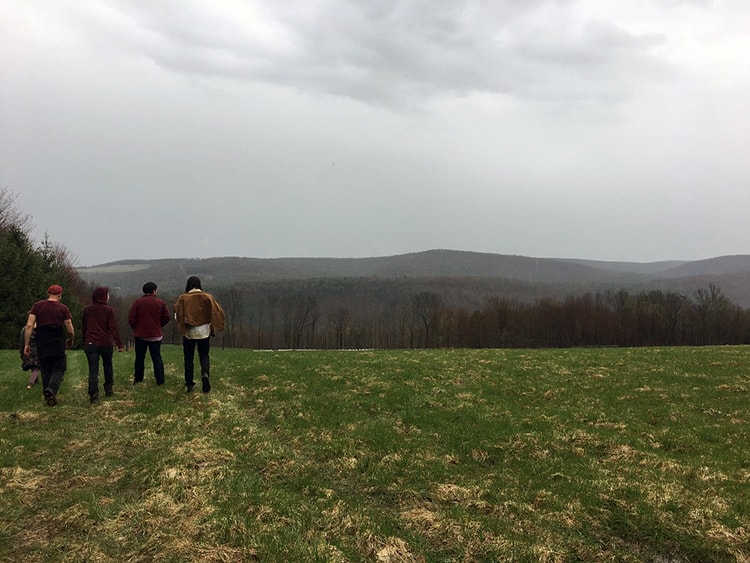
Pomolgist Mike Biltonen notes “The Hudson Valley has many distinct meso-regions throughout beginning with those that are closest to the river and extending all the way into the foothills of the Catskills. Of course, there is also north and south from Albany all the way to New York City. So, the Hudson Valley probably has a least five or six distinct growing regions.”
Today the Hudson Valley is dotted with farms of every size, from small single-family holdings to large commercial enterprises. The long history of the valley is tied to the growth and needs of New York City for dessert and eating apples. Although the entire state is putting in more and more cider trees, organization like Glynwood in the Hudson Valley were early advocates and backers of the cider industry.
The ciders being made in the Hudson Valley are as varied as its landscape. Much of the cider is made from the dessert apples like Cortlandt, Golden Delicious, Fuji and Gala, and leans towards the fresh, light and refreshing side of the cider spectrum. The nearby metropolitan market spurred the development of fast turnover for easy-drinking ciders as well as high-quality ciders that are sold at some of the finest restaurants. The diversity of soil, terrains and pressures of the valley are united by a shared history and tradition pointed towards the river and the city at its mouth.
The Hudson Valley has the longest growing season and can successfully ripen a range of different apples to levels beyond the other regions. Varieties like Golden Russet, Ashmead’s Kernel and older heirloom fruit can produce some excellent ciders with depth and complexity. Hudson valley fruit is broader, richer than other parts of the state; the acidity is never as dominant as what is found in the Finger Lakes.
Hudson Valley Factoids
- Climate zone: 5b-7a
- Geographic features: wide tidal river valley
- Soil: alluvial loam, granite mixed with shale
- Number of cider makers in the region: 25
- Common apples: dessert fruit, Fuji, Gala, McIntosh and Macoun with older heirlooms like Golden Russet and Winesaps throughout
Cider fruit: an increasing amount of European cider fruit going in the ground - Examples of producers: Orchard Hill, Bad Seed, Hudson Valley Farmhouse, Sundstrom, Metal House, West Wind.
- Character of cider: most of the cider is light and lean but ranges toward fuller textural with little-to-no bittersweet character.
The Finger Lakes
The Finger Lakes were carved during the last ice age by the crawl of Laurentide ice sheet. When the glacier rescinded 20,000 years ago, the river valleys eroded and widened into the valleys (Ithaca is 382 feet above sea level) with deep lakes (Seneca is 613 feet deep) and high crests (Finger Lakes National Forest, between Seneca and Cayuga Lakes, is 1800 feet).
This dramatic landscape creates an ideal growing climate for many fruits. The Iroquois adopted prosperous peach and other European fruit trees along the banks of the lakes until a brutal scorched retribution campaign in 1779 pushed entire communities off their land. The region was never one of New York state’s largest apple growing regions, but has emerged as a great cider region because of the quality of the fruit being grown there.
What sets the Finger Lakes apart is not the benefits of a moderate climate or a long history of growing apples, but to as Autumn Stoscheck of Eve’s Cidery put it, “a dedication towards cider making and growing fruit with that expressed propose.” The Finger Lakes cider is acid driven with tension that creates a distinct texture. Thanks to pioneers like Ian Merwin, formerly of Cornell and proprietor of Black Diamond Cider, the Finger Lakes is home to not only an amazing collection of local heirlooms but also European cider apples and countless other malus oddities.
Many of the Finger Lakes’ best ciders are made from estate-grown fruit where the same person is responsible for the health of the orchard as well as the cider in the bottle. Stoscheck said that her focus is in the orchard and “practices in the cellar need to be respectful of the time and focus we spend in the orchard.”
The ciders coming from the Finger Lakes are ripe generally over 7% ABV with many examples bordering on the 10% mark. These textured ciders maintain balance thanks to acidic intensity and fruit that makes the drinker ready for more. They are dominated by structure and finish with a distinctly rocky/slate finish.
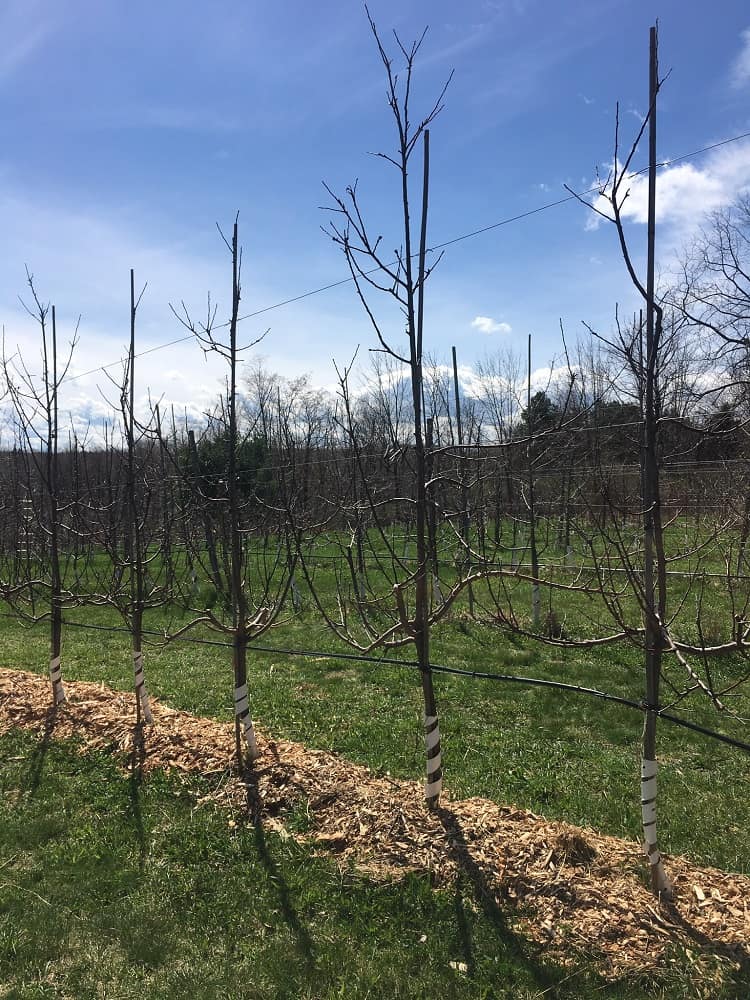
New orchard at Redbyrd
Stoscheck attributes this to the commitment to organic and sustainable growing practices that many producers use in their orchards. Orcharding and cider making in the Finger Lakes is no easy task and crafting these ciders is a considerable amount of work. Stoscheck estimates that her Northern Spy costs 10 times as much to produce than commodity apple of the same variety. This dedication of quality and orcharding makes the Finger Lakes one of the premier regions in New York State.
The Finger Lakes Factoids
- Climate zone: 6a
- Soil type: shale, limestone, slate
- Geographic features: eroded deep glacial lakes that help moderate temperature; steep steady grades into wide valleys.
- Number of cider makers in the region: 15
- Common apples: Northern Spy, Golden Russet, Golden Delicious and Macintosh
- Cider apples: Porter’s perfection, Dabinett, Wickson- several older planting with lots more coming online
- Examples of producers: Eve’s, Redbyrd, Kite and String, Southill, Black Diamond, Black Duck
- Character of cider: Ripe, high-acid cider, often with a bittersweet/sharp component to it; many cider are bottle conditioned and natural sparkling
Western New York and The South Shore of Lake Ontario
The South Shore of Lake Ontario is the largest apple-producing region in the state. This region often gets consolidated with the Finger Lakes, but with such a long apple-growing history, unique geography and now multiple producers it is important for this region to stand on its own.
Lake Ontario is the second deepest of the Great Lakes and protects the farmland to its south from volatile swings in temperature. This is intensified by the Niagara Escarpment, whose cool breezes prevent trees from blossoming before the last frost and whose warmth of water in winter keeps the region in a loop that maintains a constant airflow in the orchards. The limestone of the escarpment forms a cliff overlooking the loam, shale and the lake a few miles in the distance. The flat arable land of the region lends itself to larger farms in a way the hillside terrain of the Finger Lakes does not.
The history of these larger farms is dominated by Mott’s, who has operated a processing plant in Williamson since 1953. Mott’s remains the largest buyer of apples within New York state. Jacob Lagoner of Lagoner Farms and Embark Craft Ciderworks noted that ”There are still a few old (50+ years) orchards of Baldwin, Rhode Island Greening, McIntosh, Winesap, Northern Spy around our area and on our farm because of the long standing processing market.” These multipurpose apples are becoming the backbone of the newest wave of cider makers coming to the lakeshore.
https://www.instagram.com/p/BMmz4qbD-ZH/?taken-by=embarkcraftciderworks
Ciders from Lake Ontario are high in acid and are reliant on American heirloom apples. They tend to be more herbal and lean when compared to their riper counterparts to the Finger Lakes. Lagoner noted that, in the future, this will change because of the commitment on the part of growers like him and others in the region to plant more cider varieties.
An excellent example of the difference can be found in the 2014 and 2015 Eve’s Northern Spy. The 2014 was made from purchased fruit from Wayne county while the 2015 was made from their orchards in the south Finger Lakes. The depth of flavor, texture and concentration from the Finger Lakes fruit outshined the leaner more herbal cider from further north. The differences are shocking and contributed Stoscheck’s commitment and belief in her own fruit.
Western New York and Lake Ontario Factoids
- Climate zone: 6b-6a
- Soil: limestone on the top of Escarpment, shale, alluvial sandy loam on Lake shore
- Geographic features: Lake Ontario, Niagara Escarpment
- Number of cider producers: 9
- Common apples found in region: Cortlandt, Northern Spy, Baldwin, Rhode Island Greening, Macintosh, Honeycrisp
- Cider apples: Older Heirloom trees along with repurposed crabs more European trees coming online soon
- Examples of producers: Embark, Leonard Oaks, Black Bird, Rootstock.
- Character of cider: lighter and more acidic than their HV counterparts without the weight of the Finger Lakes
Other Regions
New York state is home to other remarkable terroirs like the Catskill mountains, whose short growing season is home to a notable collection of old homestead trees and new plantings. Biltonen says, “The fact that there are few managed apple orchards and that remaining wild apples have survived many years of neglect give the region a unique starting point for having apple varieties that have their own genetic lines.”
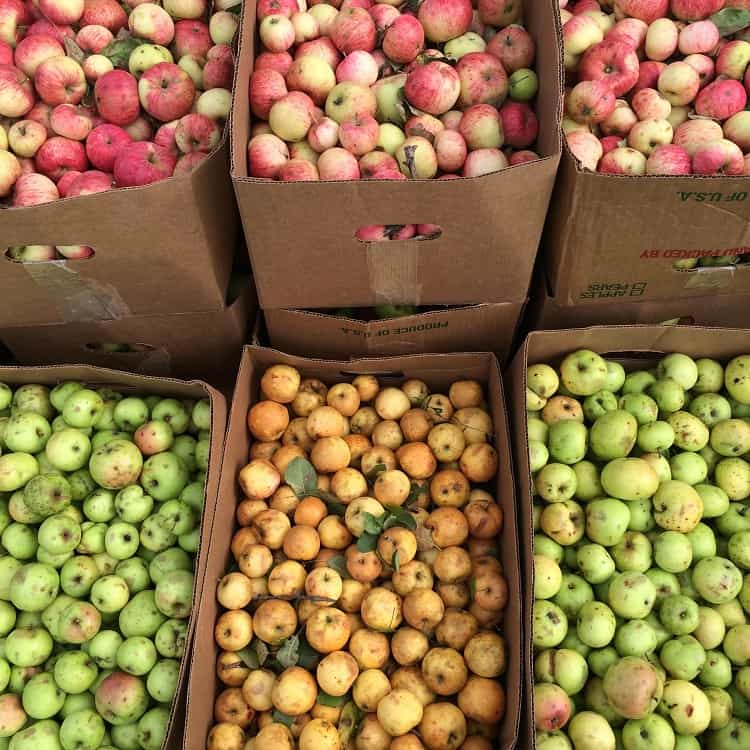
The St. Lawrence valley (shared with Canada) is home to a bounty of distinct varieties on both sides of the border. According to Kaneb Orchards apples like Macintosh, Richardson and Atlas thrive in the brutal winters and orchardists there claim only ripen properly in their frosty orchards. Lake Champlain is home to a thriving apple industry but much of the cider development is happening on the Vermont side of the lake.
Long Island is New York’s warmest region and is the glacial morrine marking the southern extent of the glacier. This once-thriving agricultural regions is still home to a strong grape growing culture but the suburbs are quickly encroaching on old orchards. These regions each have their own story to tell but are only beginning their cider journey.
Other regions number of producers:
- Catskills: 4; example: Wayside Cider
- St. Lawrence: 2; example: Kaneb Orchards
- Champlain: 1; Adx Cider
- Long Island: 2; example: Ancestral Flora
Cider is still very young within New York state with everyone from the farmers to producers to consumers still learning about the trees, the beverage and the future. Right now, a lot of cider is being made with ready materials and not the diligence of experimentation and correction.
Stoscheck said that her practices have evolved in the past few years to be more reflective of the orchard. “Many things you can do obscure the quality of the cider. In the past we were dogmatic about controlled fermentation and control regime that practice created flavors in the cider.”
The industry has a lot of room to grow and learn. Biltonen explains that “each region has its plusses and minuses. This doesn’t even begin to touch the micro differences within regions (like, east side versus west side of a hill or lake). This is I think where Napa and Sonoma have us beat in that they truly understand the micro variations of their landscape.”
The continued development of new orchards and more varieties have the potential to change the face of the cider industry in New York state. As fruits of convenience are replaced by apples and practices of purpose, then the conversation can move towards the finer details of terroir.
- Photos: Lucy Huffman
